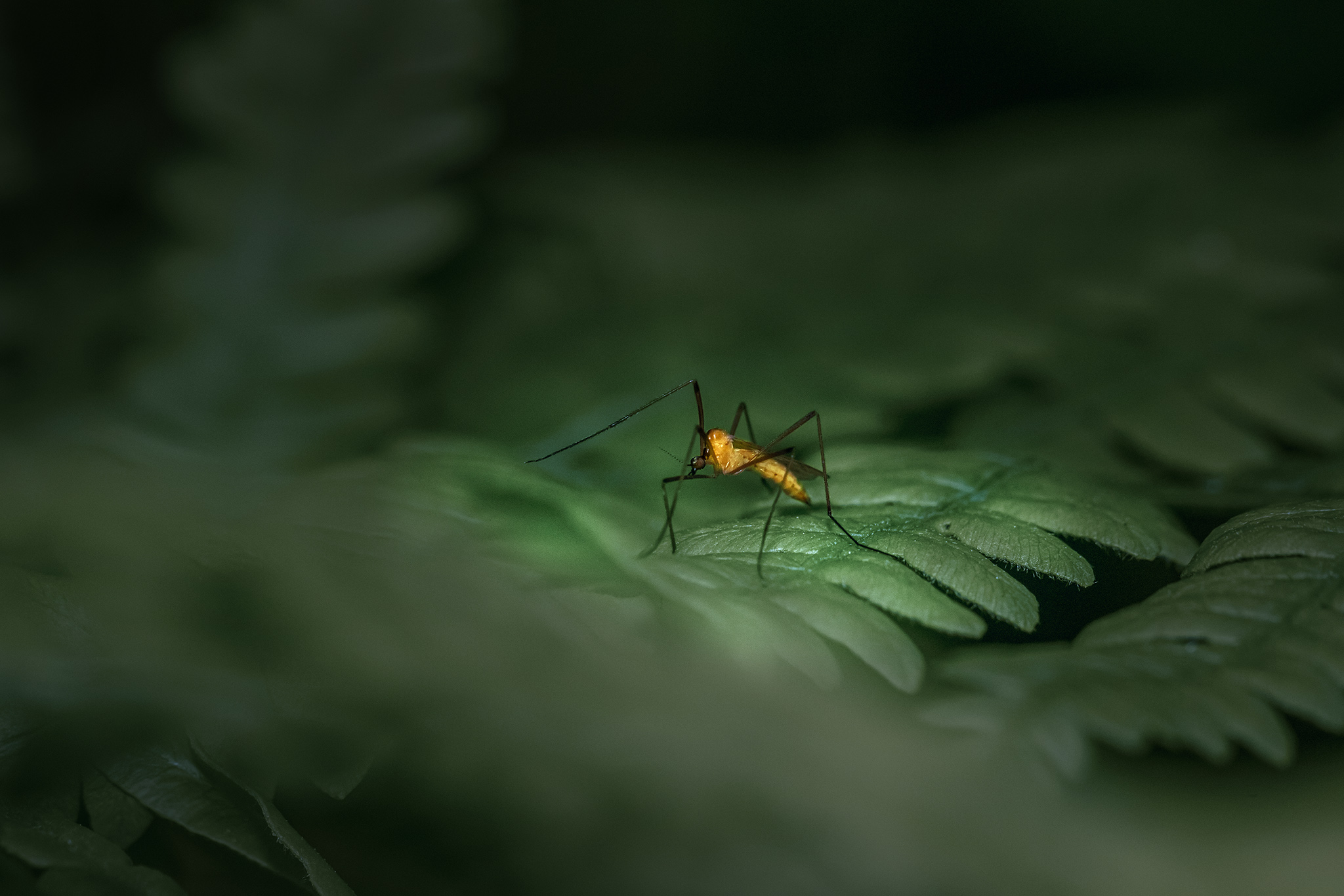The Ferruginous Tiger Crane Fly (Nephrotoma ferruginea) is a species of crane fly belonging to the family Tipulidae. Here is a brief overview of this interesting insect:
Description
- Appearance: The Ferruginous Tiger Crane Fly has a slender, elongated body with long, delicate legs typical of crane flies. It is characterized by its ferruginous (rusty or reddish-brown) coloration, which distinguishes it from other species. The thorax often has distinctive dark stripes, and the wings are usually clear with noticeable veins.
- Size: Adults typically measure around 12 to 18 millimeters in body length, with wingspans reaching up to 30 millimeters.
Distribution and Habitat
- Geographical Range: This species is commonly found throughout Europe, including the UK, and parts of Asia. It is often seen in regions with temperate climates.
- Preferred Habitats: Nephrotoma ferruginea inhabits various environments, including woodlands, meadows, gardens, and grassy fields. It is frequently found near water bodies, as its larvae require moist conditions to thrive.
Behavior and Ecology
- Feeding Habits: Adult crane flies, including the Ferruginous Tiger Crane Fly, typically do not feed or consume very little. However, if they do, they might take in nectar or plant fluids. Their primary role is reproduction. The larvae, often called “leatherjackets,” are more active feeders and consume decaying organic matter, plant roots, and soil detritus.
- Flight Pattern: The Ferruginous Tiger Crane Fly is most active from late spring to early autumn. Adults have a distinct, fluttering flight and are often seen in flight near the ground or low vegetation.
Life Cycle
- Reproduction: Females lay their eggs in moist soil or decaying plant material. The larvae hatch and feed on organic material, contributing to the decomposition process.
- Larval Stage: The larvae are known as “leatherjackets” due to their tough skin. They can often be found in lawns, fields, and gardens, where they feed on roots and decaying matter.
Importance in the Ecosystem
- Ecological Role: The larvae play a crucial role in soil aeration and nutrient recycling by breaking down organic matter. They also serve as a food source for various birds, mammals, and other insects.
- Impact on Humans: While the larvae can sometimes cause damage to crops, lawns, and gardens by feeding on plant roots, the overall ecological benefits generally outweigh the negatives.
Conservation Status
- IUCN Status: The Ferruginous Tiger Crane Fly is not currently listed as endangered, and it is considered to have a stable population in its native range.
Interesting Facts
- Lifespan: Adult crane flies have a short lifespan, often living only a few days to a week, as their primary purpose is to reproduce.
- Misconceptions: Crane flies are often mistaken for large mosquitoes, but they do not bite or sting. They are harmless to humans.
The Ferruginous Tiger Crane Fly is a unique insect with a critical role in its ecosystem, particularly in nutrient recycling and as a food source for other species.
Visited 279 times, 1 visit(s) today
Views: 825
Subscribe to the newsletter:
